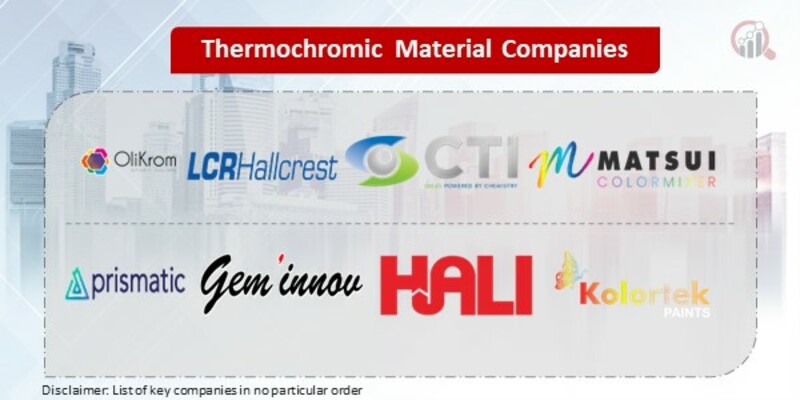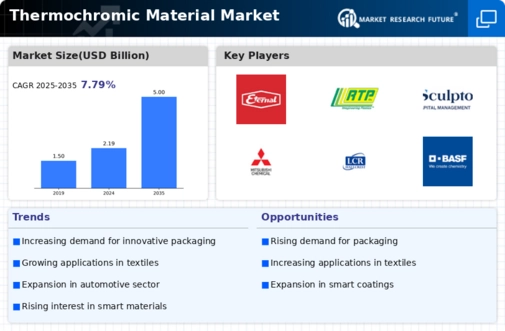Top Industry Leaders in the Thermochromic Material Market

The thermochromic material market, where colors dance with temperature, is poised for a vibrant future, this market promises both fascinating applications and fierce competition. Let's delve into the strategies, factors impacting market share, and recent developments shaping this dynamic landscape.
Competitive Strategies Heating Up the Market:
-
Industry Leaders: BASF, Merck KGaA, TCI Co., Ltd., and PPG Industries leverage their extensive R&D capabilities, global reach, and diverse product portfolios to maintain dominance. Their strategies focus on developing new thermochromic pigments and inks, strategic acquisitions, and collaborations with leading manufacturers in various industries. -
Regional Champions: Companies like Sun Chemical Corporation in the US and Zhejiang Xinan Chemical Industry Group Co., Ltd. in China hold strong positions in their respective regions. They compete on price, cater to regional needs, and build strong local distribution networks. -
Niche Innovators: Emerging players like Chromatic Technologies Inc. and OliKrom carve niches with specialty thermochromic solutions like self-healing, UV-resistant, or food-grade materials. They capitalize on unique functionalities and cater to specific customer segments, often at premium prices.
Factors Dictating Market Share:
-
Temperature Sensitivity and Color Range: Offering a diverse range of thermochromic materials with precise activation temperatures and vibrant color transitions attracts a wider customer base and increases market share. Continuous innovation is crucial for staying ahead of the curve. -
Durability and Environmental Resistance: Ensuring thermochromic materials remain color-fast, UV-resistant, and weatherproof in diverse applications is essential for long-term customer satisfaction and market penetration. -
Production Volume and Cost-Effectiveness: Large-scale production facilities and optimized manufacturing processes enable efficient production and competitive pricing, offering an edge in price-sensitive segments. -
Regulatory Compliance and Sustainability: Adhering to environmental regulations and developing eco-friendly thermochromic solutions like bio-based or recyclable materials addresses environmental concerns and opens doors to new markets. -
Technical Support and Application Expertise: Providing excellent technical support, application expertise, and design assistance builds trust and repeat business, leading to market share consolidation.
Key Players:
- OliKrom (France)
- LCR Hallcrest (U.S.)
- Chromatic Technologies (CTI) (US)
- Matsui International Company (U.S.)
- New Prismatic Enterprise (Taiwan)
- GEMINNOV (France)
- Hali Industrial (China)
- Kolorjet (India)
- Kolortek (China)
Recent Developments:
-
September 2023: OliKrom secures funding for a new production facility specializing in food-grade thermochromic pigments for temperature-sensitive packaging and food safety applications. -
October 2023: TCI Co., Ltd. develops a line of UV-resistant thermochromic pigments for outdoor signage and advertising, extending product lifespan and visual impact. -
November 2023: PPG Industries partners with a startup developing thermochromic inks for interactive gaming experiences, expanding the market into entertainment applications. -
December 2023: A team of researchers at MIT unveils a new type of thermochromic material that changes color based on both temperature and pressure, opening doors for innovative sensor and security applications.









